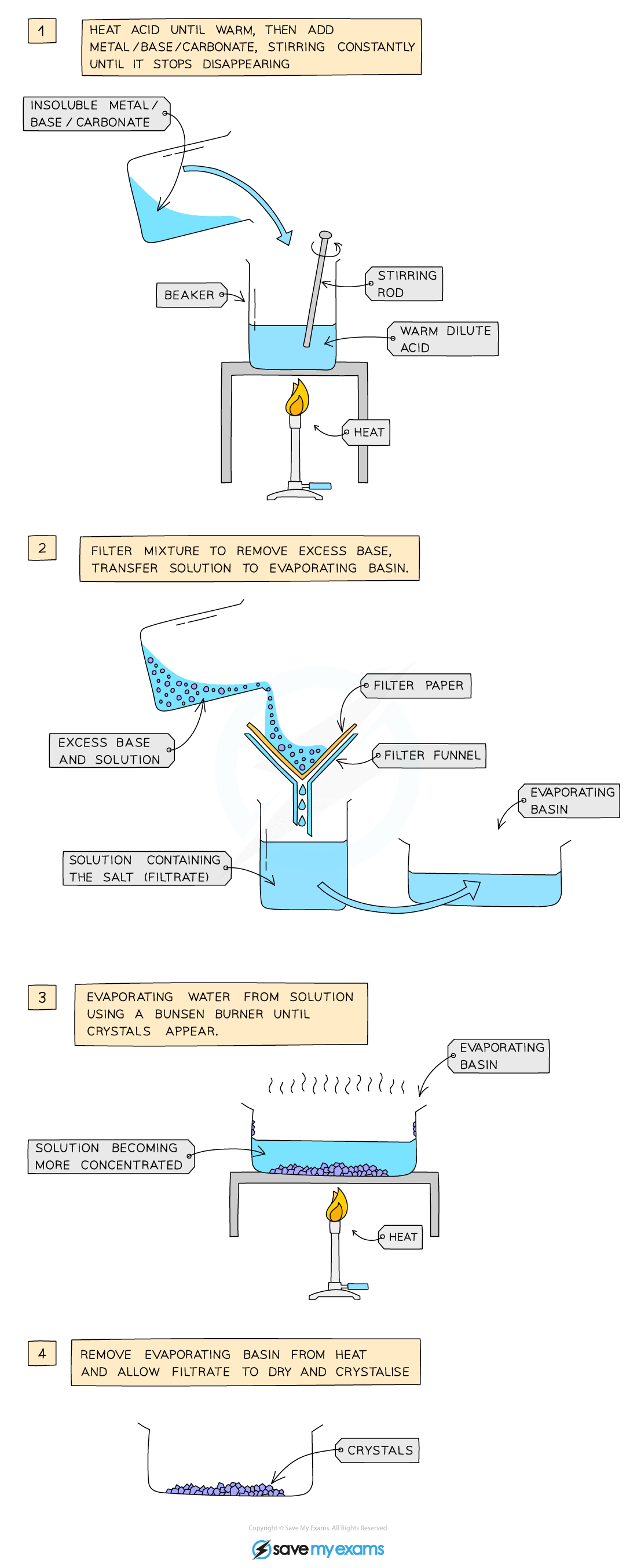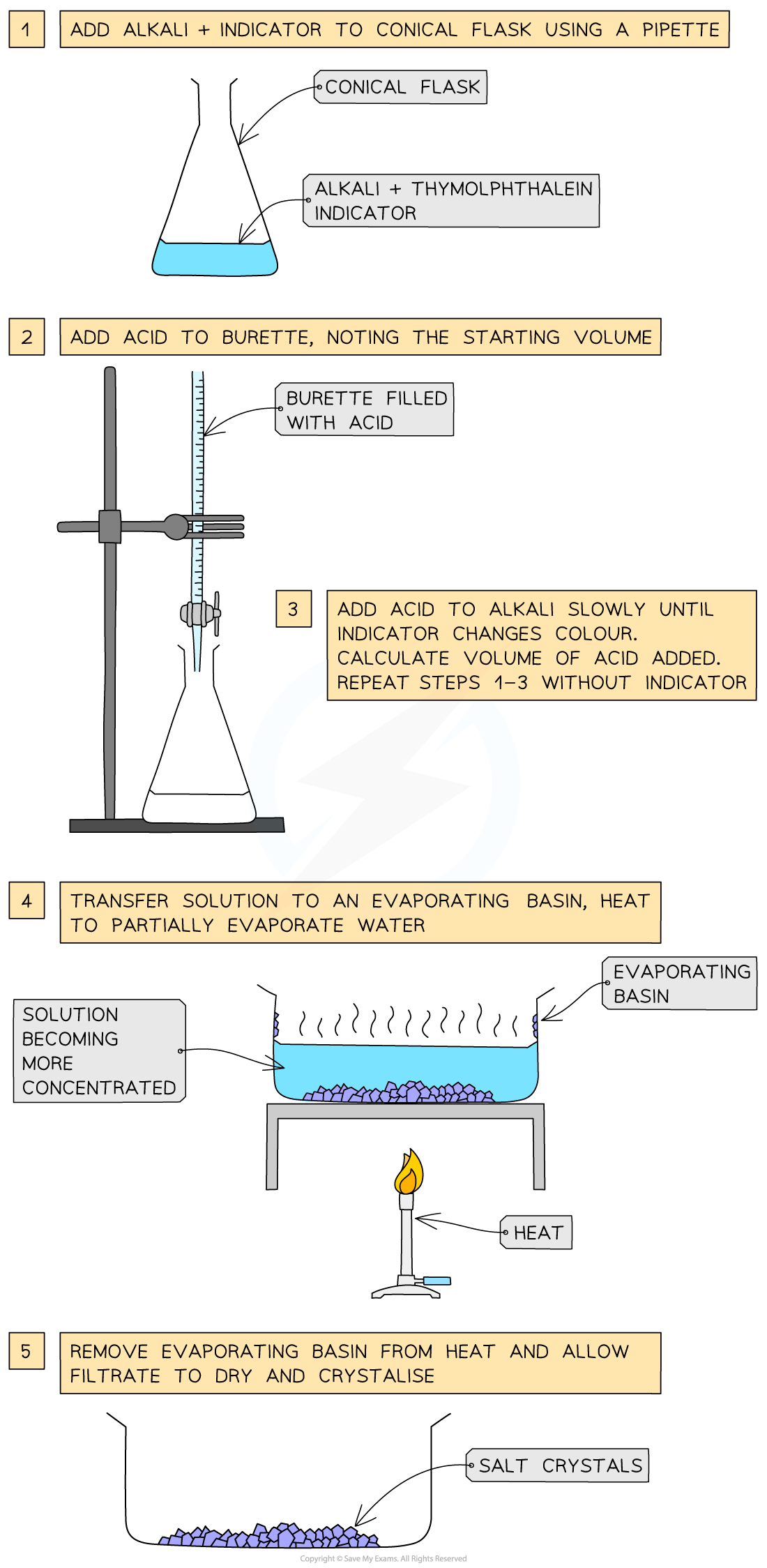Preparing Soluble Salts (Cambridge (CIE) IGCSE Chemistry): Revision Note
Exam code: 0620 & 0971
Did this video help you?
Preparing soluble salts
How to name a salt
The name of salt has two parts:
The first part comes from the metal, metal oxide or metal carbonate used in the reaction
The second part comes from the acid
The name of the salt can be determined by looking at the reactants
For example, hydrochloric acid always produces salts that end in chloride and contain the chloride ion, Cl-
Other examples:
Sodium hydroxide reacts with hydrochloric acid to produce sodium chloride
Zinc oxide reacts with sulfuric acid to produce zinc sulfate
What is a salt?
A salt is a compound that is formed when the hydrogen atom in an acid is replaced by a metal or ammonium ion
For example, replacing H in HCl with potassium gives potassium chloride, KCl
Salts have many uses including:
Fertilisers
Batteries
Cleaning products
Healthcare products
Fungicides
The method used depends on:
The solubility of the salt being prepared
Whether the base is insoluble or soluble (alkali)
Preparing soluble salts
There are two methods of preparing a soluble salt:
Method A: Acid + insoluble base / carbonate
This is for metals, metal oxides, or carbonates that do not dissolve in water
Warm dilute acid gently in a beaker.
Add the metal, insoluble base, or carbonate slowly while stirring until no more reacts (the base is in excess).
Filter the mixture to remove the excess solid.
Transfer the filtrate (salt solution) to an evaporating basin and heat gently until the solution is concentrated.
Check the solution is saturated by dipping a cold, glass rod into the solution and seeing if crystals form on the end
Leave the basin in a warm place to crystallize.
Decant excess liquid and dry the crystals with filter paper.

For example, preparing pure, hydrated copper(II) sulfate crystals using method A:
copper(II) oxide + sulfuric acid → copper(II) sulphate + water
CuO (s) + H2SO4 (aq) → CuSO4 (aq) + H2O (l)
Method B: Acid + alkali (titration method)
This is for soluble bases such as sodium hydroxide
Use a pipette to place alkali in a conical flask and add a few drops of indicator (e.g. phenolphthalein).
Fill a burette with the acid and record the starting volume.
Add the acid slowly while swirling until the indicator changes colour (end point).
Record the final volume.
Repeat the titration without indicator, using the same measured volume of acid.
Heat the neutral solution in an evaporating basin until concentrated.
Leave to crystallise, decant excess liquid, and dry the crystals.

For example, preparing pure sodium chloride crystals using method B:
sodium hydroxide + hydrochloric acid → sodium chloride + water
NaOH (aq) + HCl (aq) → NaCl (aq) + H2O (l)
Examiner Tips and Tricks
Use Method A if the base is insoluble (e.g. copper oxide).
Use Method B (titration) if the base is soluble (alkali).

Unlock more, it's free!
Did this page help you?